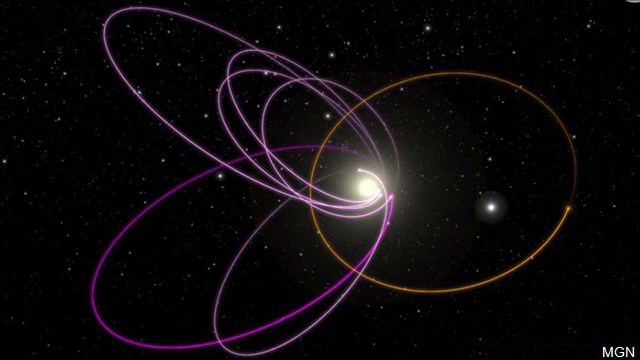Researchers claim that a huge planet 10 times the mass of Earth possibly exists within the Kuiper Belt–the region beyond Neptune. Director of Illinois State University’s Planetarium Tom Willmitch talks about the possibilities that Planet Nine exists.
Willmitch:
I guess I’m kind of skeptical when I first hear about something. Then I’ll warm up to it. But, even as I do, then other skeptical aspects kick in. When I first heard about Planet Nine, I said oh, come on. Are you serious? And then I thought about it and I was like you know, maybe… maybe, but only time will tell.
Planet Nine, if it exists, is considered a Kuiper Belt object. The Kuiper Belt is a region of the solar system that lies beyond the orbit of Neptune and includes dwarf planets, asteroids, comets, and other small icy objects. Within the Kuiper Belt there are at least a dozen objects that simply shouldn’t be there – our current understanding of how the solar system formed and evolved predicts that this region of space should be empty. Yet there these tiny worlds are.
Furthermore, using the laws of gravity the orbits of these Kuiper Belt objects make no sense. Still, combing through the observations two Caltech astronomers noticed a few similarities–the orbits are alike, with similar perihelion distances (when a planet is closest to the Sun). Also, the perihelion point of each object is located in the plane of the solar system. If you take all the planets and lay them out, their orbits form a plane around the Sun – this is the plane of the solar system or ecliptic. And these Kuiper Belt objects, when they are closest to the Sun nearly share the same point on the ecliptic. Finally, these objects approach this point from that same direction.
Statistically it is highly unlikely this would happen by chance. The Caltech astronomers reason that the gravitational tug and pull of an unseen planet beyond Neptune must be responsible–Planet Nine. There is really no other way to explain the peculiar orbits of all these Kuiper Belt objects.
All these weird things indicate something, and we don’t know what that something is. However, I’m kind of warming up to the idea of Planet Nine. It neatly pulls all these disjointed oddities together and gives them a single reasonable explanation.
Still, we need to find the planet, and it’s a needle in a haystack. If Planet Nine exists, then it takes 10–20 thousand years to go around the sun at an average distance of 700 AU (Astronomical Units) from the Sun–with the Earth at only 1 AU. Planet Nine would only be about two to four times the diameter of the Earth, with a mass 10 times that of our world. The sun is only a bright star as seen from Planet Nine.
The discovery of Planet Nine would deepen our understanding of how the solar system formed. And how the solar system formed is a big puzzle we are still working on. We think we understand the big pictures, along with many bits and pieces. Yet ultimately, the devil is in the details and Planet Nine may be a key to the details. By understanding other worlds, we better understand our own.
When it comes to Planet Nine the jury is out. It could be the next generation of astronomers who actually observe this planet shrouded in darkness. However, looking at the evidence, the finger points so strongly towards Planet Nine’s existence that we might accept the idea long before we actually see this frozen world orbiting in perpetual night.

